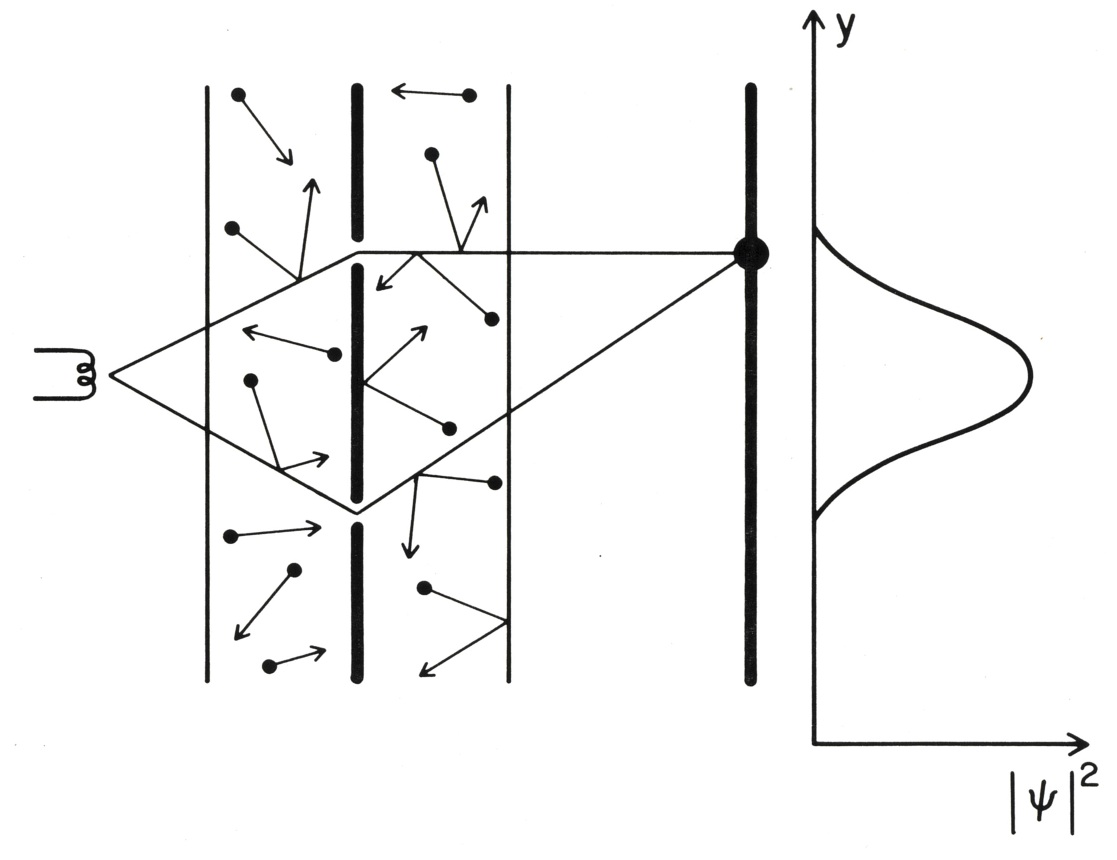Decoherent Histories Quantum Mechanics
Overview
Familiar textbook quantum mechanics (aka Copenhagen quantum theory) must be generalized to apply to cosmology. Copenhagen formulations assume a division of the world into `observer' and `observed', assume that the results of `measurements' are the sole objective of prediction, and posit the existence of an external `quasiclassical realm' containing essentially classical `observers'. However, in a theory of the whole thing there can be no fundamental division into observer and observed. Measurements and observers cannot be fundamental notions in a theory that seeks to describe the early universe when neither existed. In a basic of quantum mechanics there is no reason for there to be any variables that exhibit classical behavior in all circumstances.
A quantum mechanics of closed systems general enough for cosmology has been developed over the last three decades. The author refers to it as decoherent histories quantum mechanics (DH). (But see the note on terminology and history [term].) Decoherent histories quantum theory is logically consistent, consistent with  experiment as far as is known, consistent with the rest of modern physics such as special relativity and field theory, general enough for histories, general enough for cosmology, and generalizable for quantum gravity. Copenhagen quantum mechanics is contained within DH as an approximation appropriate for measurement situations. DH may not be the only formulation of quantum mechanics with these properties but it is the only one we have at present.
experiment as far as is known, consistent with the rest of modern physics such as special relativity and field theory, general enough for histories, general enough for cosmology, and generalizable for quantum gravity. Copenhagen quantum mechanics is contained within DH as an approximation appropriate for measurement situations. DH may not be the only formulation of quantum mechanics with these properties but it is the only one we have at present.
The author has written enough papers on decoherent histories quantum theory that it is useful to divide them into groups with their own set of pages as follows:
Fundamentals [fund]
This section is devoted to papers explaining DH in the approximation that gross quantum gravitational fluctuations in the geometry of spacetime can be neglected. Then amodel for a closed system is a very large, perhaps expanding, box containing matter fields moving in a fixed spacetime geometry. That is the simplest starting point for exposition.
Quasiclassical Realms [qcrealms]
In our quantum universe the deterministic laws of classical physics apply approximately on a wide range of time, place, epoch, and scale. A quantum theory like DH that does not posit this quasiclassical realm must seek to explain it as arising from the universe's quantum dynamics and quantum state. The papers in this section are devoted to characterizing the quasiclassical realm within quantum mechanics and explaining its origin.
Generalizations in Fixed Spacetime Geometries [gqm]
DH must be generalized further to incorporate quantum spacetime.
The papers in this section develop a framework for generalizing DH called generalized quantum theory. This is illustrated with examples in fixed spacetimes such as alternatives that extend over time, and time-neutral quantum mechanics with initial and final conditions.
Generalizations Needed for Quantum Gravity [qst]
Papers in this section develop a sum-over-histories, generalized quantum mechanics of spacetime geometry that is used in other sections to extract predictions for the cosmological history of our universe from theories of its dynamics and quantum state.
Quantum Mechanics with Extended Probabilities [exprobs]
Papers in this section explore one route to usefully reformulating DH and to developing testably distinct alternatives to it by using extended probabilities that can be sometimes negative.
Comment on History and Terminology [term-hist]
